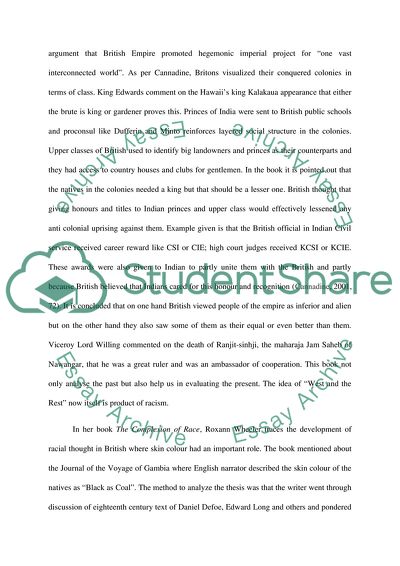Cite this document
(“Britain: Roxann Wheeler, The Complexion of Race, Sadiah Qureshi, Book Report/Review”, n.d.)
Britain: Roxann Wheeler, The Complexion of Race, Sadiah Qureshi, Book Report/Review. Retrieved from https://studentshare.org/history/1661142-britain-roxann-wheeler-the-complexion-of-race-sadiah-qureshi-peoples-on-parade-and-david-cannadine-ornamentalism
Britain: Roxann Wheeler, The Complexion of Race, Sadiah Qureshi, Book Report/Review. Retrieved from https://studentshare.org/history/1661142-britain-roxann-wheeler-the-complexion-of-race-sadiah-qureshi-peoples-on-parade-and-david-cannadine-ornamentalism
(Britain: Roxann Wheeler, The Complexion of Race, Sadiah Qureshi, Book Report/Review)
Britain: Roxann Wheeler, The Complexion of Race, Sadiah Qureshi, Book Report/Review. https://studentshare.org/history/1661142-britain-roxann-wheeler-the-complexion-of-race-sadiah-qureshi-peoples-on-parade-and-david-cannadine-ornamentalism.
Britain: Roxann Wheeler, The Complexion of Race, Sadiah Qureshi, Book Report/Review. https://studentshare.org/history/1661142-britain-roxann-wheeler-the-complexion-of-race-sadiah-qureshi-peoples-on-parade-and-david-cannadine-ornamentalism.
“Britain: Roxann Wheeler, The Complexion of Race, Sadiah Qureshi, Book Report/Review”, n.d. https://studentshare.org/history/1661142-britain-roxann-wheeler-the-complexion-of-race-sadiah-qureshi-peoples-on-parade-and-david-cannadine-ornamentalism.


